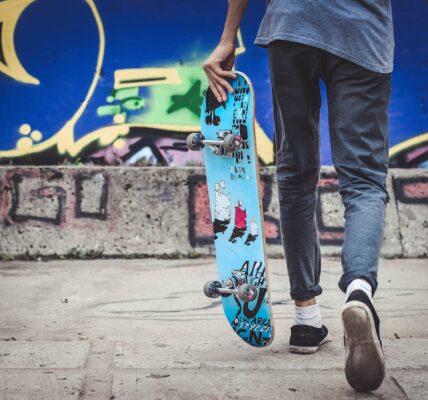Fujifilm recipes are custom camera settings designed to emulate specific film looks or create unique visual styles in digital photography. These settings are particularly popular among food photographers for their ability to enhance the appearance of culinary subjects. Fujifilm cameras offer a range of customizable parameters, including color profiles, contrast, and grain effects, which photographers can adjust to achieve desired results.
Food photography with Fujifilm recipes involves capturing the visual aspects of dishes, ingredients, and cooking processes. This type of photography aims to present food in an appealing manner, highlighting textures, colors, and composition. Photographers can use Fujifilm recipes to emphasize certain characteristics of food, such as the vibrant hues of fresh produce or the rich tones of cooked meats.
The versatility of Fujifilm recipes allows photographers to adapt their approach based on the specific requirements of each food subject. For instance, different recipes may be employed to photograph raw ingredients versus plated dishes, or to capture the ambiance of various dining environments. This flexibility enables photographers to create diverse portfolios of food imagery, catering to different styles and client needs in the culinary and hospitality industries.
Key Takeaways
- Fujifilm Recipes offer a unique way to capture and share culinary creations through photography.
- The art of food photography involves capturing the beauty and essence of dishes through composition and styling.
- Tips for styling and composition include using props, considering angles, and creating a focal point in the photo.
- Lighting techniques such as natural light and diffused lighting can enhance the appeal of food photos.
- Editing and enhancing food photos can be done using Fujifilm’s advanced editing tools to bring out the best in your culinary creations.
Exploring the Art of Food Photography
The Importance of Composition
Composition is a key element of food photography, involving the arrangement of elements in a way that is aesthetically pleasing and draws the viewer’s eye to the focal point. Techniques such as the rule of thirds, leading lines, and negative space play a crucial role in creating captivating food photographs.
Mastering Lighting Techniques
Lighting is another essential aspect of food photography, and understanding how to manipulate and control light is crucial for capturing mouthwatering food shots. Whether using natural light, artificial light, or a combination of both, the right lighting can make all the difference in how a dish is portrayed in a photograph.
Experimenting with Fujifilm Recipes
With Fujifilm recipes, you have the opportunity to experiment with different lighting techniques and composition styles to create stunning and appetizing food photographs that showcase the textures, colors, and details of the dish. By mastering these elements, you can take your food photography to the next level and create images that are sure to tantalize the taste buds.
Tips for Styling and Composition
When it comes to styling and composition in food photography, there are several tips and techniques that can help you create visually stunning images. One important aspect of styling is choosing the right props and backgrounds to complement the dish. Whether it’s using rustic wooden boards, elegant tableware, or colorful linens, the props and backgrounds you choose can enhance the overall aesthetic of the photograph.
Additionally, paying attention to details such as garnishes, sauces, and utensils can add depth and visual interest to the composition. In terms of composition, there are several techniques that can help you create dynamic and engaging food photographs. The rule of thirds is a classic composition technique that involves dividing the frame into nine equal parts and placing the main elements of the dish along these lines or at their intersections.
This creates a sense of balance and visual interest in the photograph. Another technique is using leading lines to draw the viewer’s eye towards the focal point of the image. Whether it’s using utensils, ingredients, or other elements within the frame, leading lines can create a sense of movement and guide the viewer’s gaze through the photograph.
Lighting Techniques for Mouthwatering Shots
| Technique | Description |
|---|---|
| Soft Light | Using diffused light to create a gentle and flattering effect on the subject. |
| Backlighting | Placing the light behind the subject to create a glowing effect and enhance texture. |
| Fill Light | Using a secondary light source to fill in shadows and create a balanced exposure. |
| Reflectors | Using reflective surfaces to bounce light onto the subject and fill in shadows. |
| Light Modifiers | Using tools like umbrellas, softboxes, and grids to control and shape the light for desired effects. |
Lighting is one of the most important aspects of food photography, as it can dramatically impact the overall look and feel of the photograph. When it comes to Fujifilm recipes, there are several lighting techniques that can help you capture mouthwatering shots of your culinary creations. Natural light is often preferred for food photography, as it provides a soft and flattering illumination that enhances the colors and textures of the dish.
Whether it’s shooting near a window or outdoors, natural light can create a warm and inviting atmosphere in your food photographs. In addition to natural light, artificial light can also be used to create stunning food photographs. Whether it’s using studio lights, LED panels, or flash units, artificial light allows you to have more control over the lighting conditions and can be used to create dramatic and moody effects in your photographs.
With Fujifilm recipes, you have the flexibility to experiment with different lighting setups to find the perfect illumination for your culinary creations. Whether it’s using diffusers, reflectors, or other light modifiers, understanding how to manipulate light is crucial for capturing mouthwatering shots of food.
Editing and Enhancing Your Food Photos
Once you’ve captured your food photographs with Fujifilm recipes, it’s time to edit and enhance them to bring out their full potential. Editing software such as Adobe Lightroom or Photoshop can be used to adjust exposure, contrast, color balance, and other aspects of the image to create stunning and appetizing food photographs. One important aspect of editing food photos is ensuring that the colors are accurate and vibrant, as this can greatly impact the overall appeal of the dish.
In addition to color correction, editing software can also be used to enhance details and textures in food photographs. Whether it’s sharpening details, adjusting clarity, or adding selective sharpening to specific areas of the image, these techniques can help bring out the mouthwatering qualities of the dish. Furthermore, editing software can be used to remove any distractions or imperfections in the photograph, such as crumbs, spills, or blemishes on the dish.
With Fujifilm recipes, you have the opportunity to experiment with different editing techniques to create visually stunning and appetizing food photographs that are sure to make your audience’s mouths water.
Sharing Your Culinary Creations on Social Media

Maximizing Visibility and Reach
Once you’ve captured and edited your mouthwatering food photographs with Fujifilm recipes, it’s time to share them with the world on social media. Platforms such as Instagram, Facebook, and Pinterest provide an opportunity for you to showcase your culinary creations and connect with a community of food enthusiasts. When sharing your food photographs on social media, it’s important to consider factors such as timing, hashtags, and engagement in order to maximize visibility and reach.
Timing is Everything
One important aspect of sharing food photographs on social media is timing. Posting at times when your audience is most active can help increase engagement and visibility for your posts.
Hashtags and Engagement
Additionally, using relevant hashtags can help categorize your posts and make them more discoverable by users who are interested in food photography. Engaging with your audience by responding to comments, asking questions, and participating in conversations can also help build a community around your culinary creations.
Building a Community
With Fujifilm recipes, you have the opportunity to share your passion for food photography with a global audience and connect with like-minded individuals who share your love for capturing mouthwatering shots of delicious dishes.
Preserving Your Food Memories with Fujifilm
Fujifilm recipes not only provide a platform for capturing stunning food photographs but also offer a way to preserve your culinary memories for years to come. Whether it’s creating photo books, prints, or digital galleries, Fujifilm recipes enable you to showcase your culinary creations in a way that is both artistic and timeless. By preserving your food memories with Fujifilm recipes, you can create a visual legacy of your culinary journey that can be cherished and shared with friends and family.
In addition to preserving your own food memories, Fujifilm recipes also provide an opportunity to inspire others through your culinary creations. Whether it’s sharing recipes, tips, or behind-the-scenes insights into your photography process, Fujifilm recipes enable you to connect with a community of food enthusiasts who share your passion for capturing mouthwatering shots of delicious dishes. By preserving your food memories with Fujifilm recipes, you have the opportunity to leave a lasting impact on others and inspire them to explore their own creativity through food photography.
If you’re looking for more inspiration for Fujifilm recipes, check out the article on sophiaclubroma.com for some delicious and creative ideas. Whether you’re a seasoned Fujifilm enthusiast or just starting out, you’ll find plenty of mouth-watering recipes to try out and enjoy.
FAQs
What are Fujifilm recipes?
Fujifilm recipes are a collection of settings and techniques used to achieve specific photographic effects using Fujifilm cameras and lenses.
What types of effects can be achieved with Fujifilm recipes?
Fujifilm recipes can be used to achieve a wide range of effects, including color grading, film simulation, and creative image processing.
How can I access Fujifilm recipes?
Fujifilm recipes can be found online on photography forums, websites, and social media platforms. They are often shared by photographers who have developed and tested the settings themselves.
Can Fujifilm recipes be used with any Fujifilm camera?
Fujifilm recipes are typically designed for specific camera models and may not produce the same results on different models. It’s important to check if a recipe is compatible with your specific camera before using it.
Are Fujifilm recipes reversible?
Fujifilm recipes are reversible, meaning that you can easily switch back to your camera’s default settings after applying a recipe. This allows for experimentation without permanently altering your camera’s settings.




